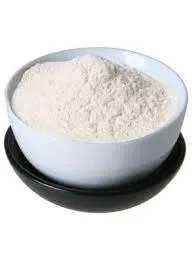
Dez . 02, 2024 01:42 Back to list
hpmc grades viscosity
Understanding HPMC Grades and Their Viscosity Properties
Hydroxypropyl Methylcellulose (HPMC) is a widely-used ingredient in various industries, including pharmaceuticals, food, cosmetics, and construction. Its versatility comes from the different grades of HPMC, each with unique properties, one of the most significant being viscosity. Viscosity is a measure of a fluid's resistance to flow and is essential in determining how effectively HPMC can be utilized in specific applications.
What is HPMC?
HPMC is a semi-synthetic polymer derived from cellulose, a natural polymer found in plant cell walls. Through a series of chemical modifications, cellulose is transformed into HPMC, which allows for enhanced solubility and functionality. The most critical structural modifications in HPMC involve hydroxypropyl and methyl substitutions, which significantly alter its properties.
HPMC Grades and Their Variations
HPMC grades are classified based on several factors, including the degree of substitution, viscosity, and the specific application for which they are intended. These grades can range from low-viscosity to high-viscosity types. The viscosity of HPMC is influenced by several variables, including the concentration of HPMC in a solution, the molecular weight of the polymer, and the degree of substitution.
1. Low Viscosity Grades These grades have a reduced resistance to flow, making them suitable for applications requiring thin solutions. They are often used in formulations for pharmaceuticals where a rapid release of the active ingredient is desired. Examples include certain types of eye drops and suspensions.
2. Medium Viscosity Grades Medium viscosity HPMC is commonly used in food products and cosmetic formulations, providing a balance between texture and flow. These grades offer improved stability in food preparations and can enhance the mouthfeel of beverages.
3. High Viscosity Grades High-viscosity HPMC forms thick gels and is ideal for applications that require significant suspension or stability. In construction, high-viscosity HPMC is often used in cement and tile adhesives to improve workability and extend open time.
hpmc grades viscosity

Measuring Viscosity
Viscosity is typically measured using viscometers, which can determine the resistance of a fluid to flow under an applied force. In the case of HPMC, viscosity measurements can vary based on factors such as temperature, shear rate, and concentration.
Most manufacturers provide viscosity values at specific concentrations and shear rates, allowing formulators to select the appropriate grade based on their application requirements. It’s crucial to understand that viscosity is not a fixed property; it can change depending on processing conditions and the environment it is exposed to.
Importance of Viscosity in Applications
In pharmaceuticals, the viscosity of HPMC directly influences drug release rates. By adjusting the viscosity through different grades, formulators can achieve desired release profiles for oral or topical medications. Furthermore, in the food industry, viscosity affects mouthfeel, stability, and texture, all of which are vital for consumer satisfaction.
In building materials, the viscosity of HPMC affects the application and performance of products. For example, a higher viscosity HPMC can improve adhesion and reduce slippage in tile adhesives, making them easier to work with and enhancing their effectiveness.
Conclusion
The versatility of HPMC in various industries cannot be overstated, and its viscosity is a critical property that determines its effectiveness in formulations. Understanding the different grades of HPMC and their viscosity allows manufacturers to tailor products to meet specific performance criteria, ultimately enhancing the functionality and consumer experience. Whether in pharmaceuticals, food, cosmetics, or construction, HPMC continues to be indispensable, demonstrating the importance of viscosity in material properties and applications. As industries evolve and new formulations are developed, the role of HPMC and its viscosity characteristics will remain pivotal in driving innovation and efficiency.
-
Unlocking the Benefits of HPMC Products: A Gateway to Versatile Applications
NewsAug.07,2025
-
Unleashing the Potential of HPMC Ashland: A Comprehensive Look
NewsAug.07,2025
-
Tile Bonding Cellulose: The Key to Superior Adhesion and Durability
NewsAug.07,2025
-
Hydroxypropyl Methylcellulose Powder: The Versatile Component in Modern Pharmaceuticals
NewsAug.07,2025
-
Hydroxyethyl Cellulose: The Versatile Solution for Various Industries
NewsAug.07,2025
-
Hydroxyethyl Cellulose (HEC): The Versatile Polymer for Various Applications
NewsAug.07,2025







